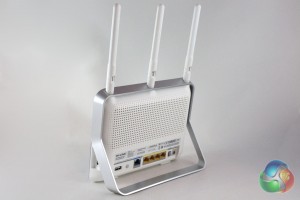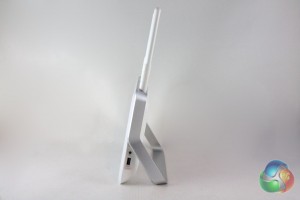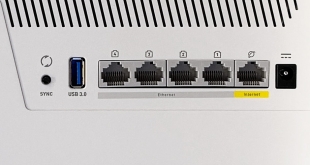The TP-LINK Archer C9 is not the most stylish router that we have seen, but it is hardly an ugly duckling either. The router itself stands upright (it is not possible to position it in any other orientation) and is finished in gloss white plastic.
TP-Link have kept the branding on the subtle side, with a small local located in the middle of the gloss plastic sheet which finishes the front of the unit.
We find a series of eight LED indicators which span the top of the router, and are located directly below the three antenna. These are removable and can be positioned in multiple orientations.
Turning the router around reveals the extensive hub of connections on the reverse side. From left to right we find a USB2.0 port, the WPS/Reset button, an RJ-45 Ethernet jack to connect the router to the internet, four further RJ-45 Ethernet jacks which act as a switch, the power button and the DC-in jack.
In addition to the connections on the rear of the router we find a USB3.0 port and a WiFi button on the right hand edge of the router.
 KitGuru KitGuru.net – Tech News | Hardware News | Hardware Reviews | IOS | Mobile | Gaming | Graphics Cards
KitGuru KitGuru.net – Tech News | Hardware News | Hardware Reviews | IOS | Mobile | Gaming | Graphics Cards








